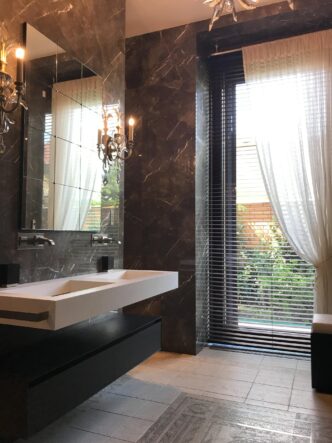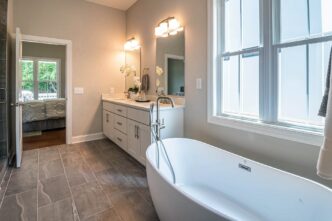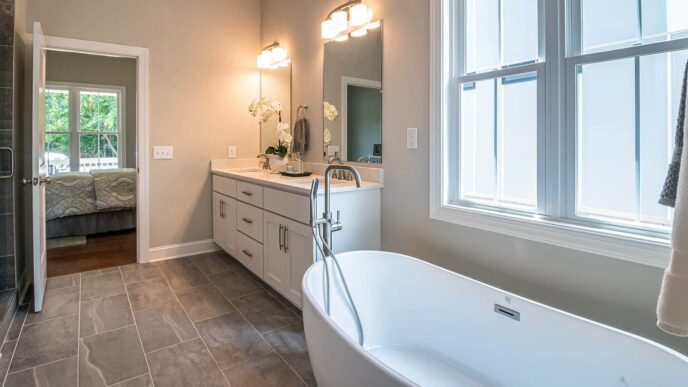Navigating the world of bathroom renovations can be tricky, but being aware of common bathroom vanity mistakes is crucial for creating a stylish and functional space.
In this comprehensive guide, we’ll delve deeper into five key errors to avoid when choosing a bathroom vanity. From size mishaps to style blunders, this blog will ensure you make informed decisions for your bathroom renovation, steering clear of common bathroom vanity mistakes.
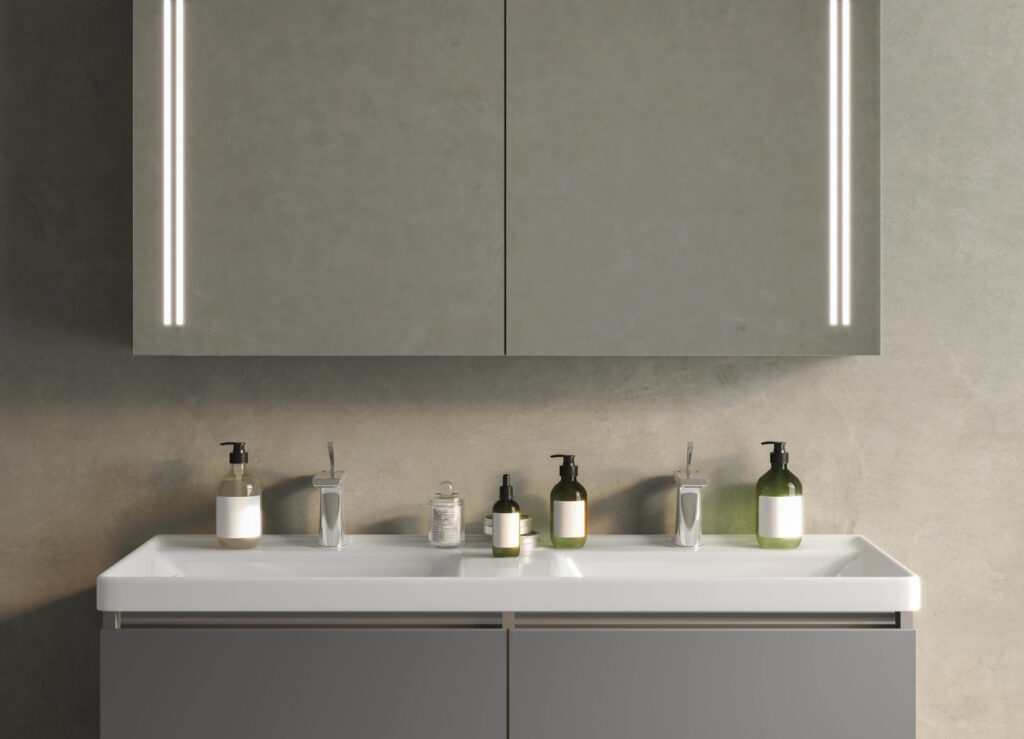
1. Failing to Choose the Right Size
A frequent bathroom vanity mistake is selecting a size that doesn’t complement your space. An oversized vanity can dominate a small bathroom, impeding movement and cramping the area. On the other hand, a vanity that’s too small might fail to meet your functional needs, offering inadequate countertop and storage space.
To sidestep this bathroom vanity mistake, it’s essential to measure your bathroom precisely, taking into account door openings, existing fixtures, and necessary clearance for foot traffic. The ideal vanity balances practicality with aesthetics, providing sufficient space without overwhelming the room.
2. Overlooking Storage Needs
An often overlooked bathroom vanity mistake is failing to consider storage requirements. A cluttered countertop, resulting from inadequate storage, can make your daily routine chaotic and frustrating.
To avert this bathroom vanity mistake, thoroughly evaluate what you need to store – including toiletries, cosmetics, and linens. Choose a vanity that offers a variety of storage options, like drawers and cabinets of different sizes, and perhaps even adjustable shelves for customizable storage solutions.
3. Poor Material Choice
Selecting inappropriate materials for a bathroom vanity is another common mistake. A bathroom has high moisture levels and temperature variations, which demands materials that can withstand these conditions.
Avoid choosing non-moisture-resistant materials that cause problems such as swelling, warping, or mold. Instead, use durable materials like moisture-resistant wood, engineered stone, or quartz.
Additionally, the vanity’s finish plays a significant role in its longevity. A high-quality finish can act as a shield, protecting the underlying material from moisture and wear.
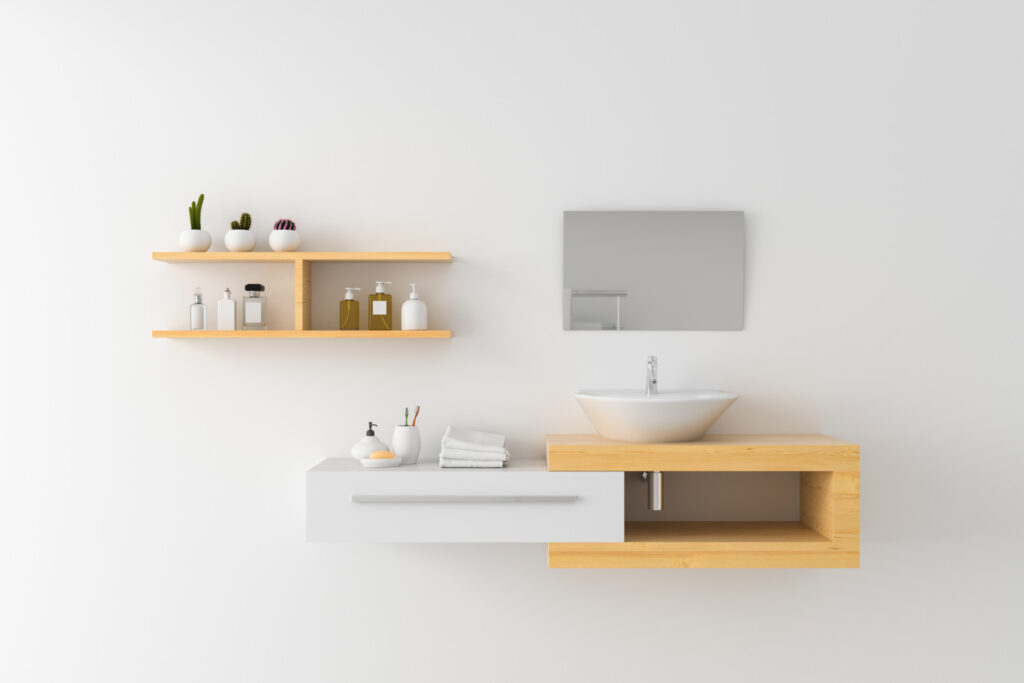
4. Ignoring Plumbing Placement
Often, a critical bathroom vanity mistake is neglecting the importance of plumbing placement. The position of your plumbing significantly influences the type of vanity suitable for your bathroom. For instance, floor plumbing necessitates a different vanity style compared to wall plumbing.
Installing a vanity without considering existing plumbing can lead to expensive modifications, including the need to reroute pipes. To avoid such costs, consult with a plumbing expert before finalizing your vanity choice.
5. Disregarding Style and Aesthetics
Ignoring the vanity’s impact on your bathroom’s overall aesthetic is a frequent blunder. The vanity plays a central role in defining the style of your bathroom and having one that clashes with the existing decor can disrupt the visual harmony of the space.
When selecting a vanity, consider how it will blend with your bathroom’s style, color scheme, and finishes. Whether your preference leans towards modern minimalism, classic elegance, or an eclectic mix, many vanity styles and finishes suit your taste.
Always think of the vanity as more than a mere cabinet to steer clear of expensive mistakes in the long run. Whether embarking on a complete overhaul or a simple refresh, these tips will guide you in creating a bathroom that meets your needs.
Follow us on Instagram for ongoing practical tips, creative ideas, and the latest in home renovation trends. Our community is a vibrant place to gather inspiration, share your renovation experiences, and connect with fellow home improvement enthusiasts.
Frequently Asked Questions
Q1: Can I install a double sink vanity in a small bathroom?
Yes, you can install a double sink vanity in a small bathroom, but it’s crucial to choose a compact design that fits the space without restricting movement. Consider your actual needs and the layout of your bathroom to ensure it enhances functionality without overcrowding.
Q2: How do I protect my bathroom vanity from water damage?
To protect your vanity from water damage, ensure it’s made of moisture-resistant materials and apply a waterproof sealant to wood surfaces. Also, keep the area well-ventilated and wipe up any spills promptly to prevent water from seeping into the vanity.
Q3: Are floating vanities a good choice for small bathrooms?
Floating vanities can be a great choice for small bathrooms as they help create the illusion of more space by freeing up floor area. They also make cleaning easier and can be installed at various heights to suit your needs.
Q4: How do I choose the right vanity color for my bathroom?
Choose a vanity color that complements the overall color scheme of your bathroom. Consider neutral colors for a timeless look or bold colors for a statement piece. Ensure the color matches or enhances the room’s aesthetic and contributes to the desired atmosphere.
Q5: What’s the best countertop material for a bathroom vanity?
The best countertop materials for a bathroom vanity include quartz, granite, marble, and solid surface. These materials are durable, resistant to moisture and stains, and available in a wide range of colors and patterns to suit any bathroom design.
